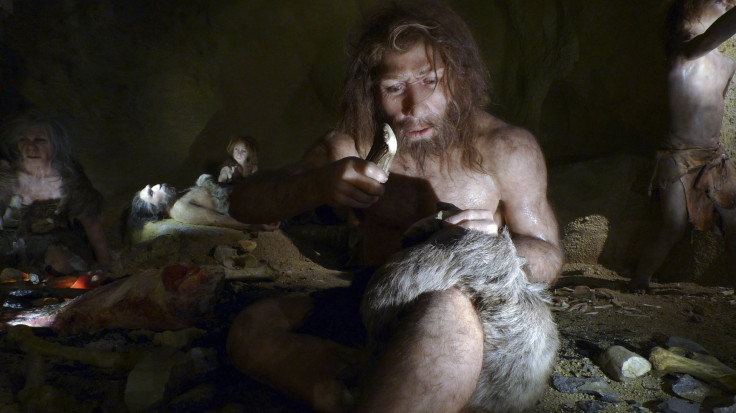Neanderthal Dental Records Suggest Prehistoric Man Ate Animal Stomachs

Would you like a side of animal stomach with that burger? Neanderthals, modern man’s close primate relative, may have favored the flavor of a food-gorged animal gut now and then, according to scientists studying Neanderthals’ dental records.
In a new paper published in the journal Quaternary Science Reviews, anthropologists from London’s Natural History Museum describe the plant material found in the plaque of 50,000-year-old Neanderthal teeth as having come from the stomach contents of their prey. Researchers revisited the dental records of Neanderthals from El Sidrón Cave in Spain, where Neanderthal remains were first uncovered in 1994. The records were assembled last year as part of a study into Neanderthal diets.
The researchers theorize that the prehistoric tooth tartar showed signs of a Neanderthal diet rich in animal gut.
This theory challenges a study published last year that argued that the microscopic plant and herb particles found in the Neanderthals’ teeth were part of the early human relatives’ balanced diet. In July 2012, researchers from the Catalan Institution for Research and Advanced Studies in Barcelona found evidence that Neanderthals ate a range of plant foods, including yarrow and chamomile, and even understood their nutritional and medicinal qualities, Sci News reported.
“The evidence indicating this individual was eating bitter-tasting plants such as yarrow and chamomile with little nutritional value is surprising,” Stephen Buckley of the University of York said in a statement on the university website. “We know that Neanderthals would find these plants bitter, so it is likely these plants must have been selected for reasons other than taste.”
The new study argues for another possible source of the plant remains in Neanderthals’ plaque.
"The mistake is to think that because you find plant fragments in teeth that they must have got there because these carnivores – in this case Neanderthals – had consumed them as part of a carefully constructed diet," Laura Buck, a research assistant in paleontology at the Natural History Museum who worked on the new study, told The Observer. "In fact, they may have got there purely because Neanderthals liked to eat the stomach contents of some of the animals they killed."
Her colleague Chris Stringer added that many hunter-gatherers, including the Inuit of the Arctic regions of Greenland and Canada and the Cree and Blackfeet tribes of North America, eat animal stomachs for nourishment, especially as a source of vitamin C and trace elements. Some, including the Inuit, even consider it a delicacy. Stringer said the flavor and consistency of animal stomach is similar to that of cream cheese.
“At least that is what I am told,” he quipped.
According to Phys.org, Australian aborigines still eat the chyme – that is, the partially digested mass of food expelled by the stomach into the first section of the small intestine – of kangaroo.
“The practice of eating the stomach contents of prey could be a behavior that goes right back to the earliest humans,” Stringer said in a statement on the museum website. “Having gone through the time and trouble of securing the carcass of a large herbivore, why would our ancestors have wasted such a source of nutrition?”
Neanderthals, an extinct species of the genus Homo and named for the Neander’s Valley in Germany where they were first discovered, roamed Europe as early as 600,000 to 350,000 years ago. Scientists believe they disappeared around 45,000 years ago.
© Copyright IBTimes 2024. All rights reserved.












